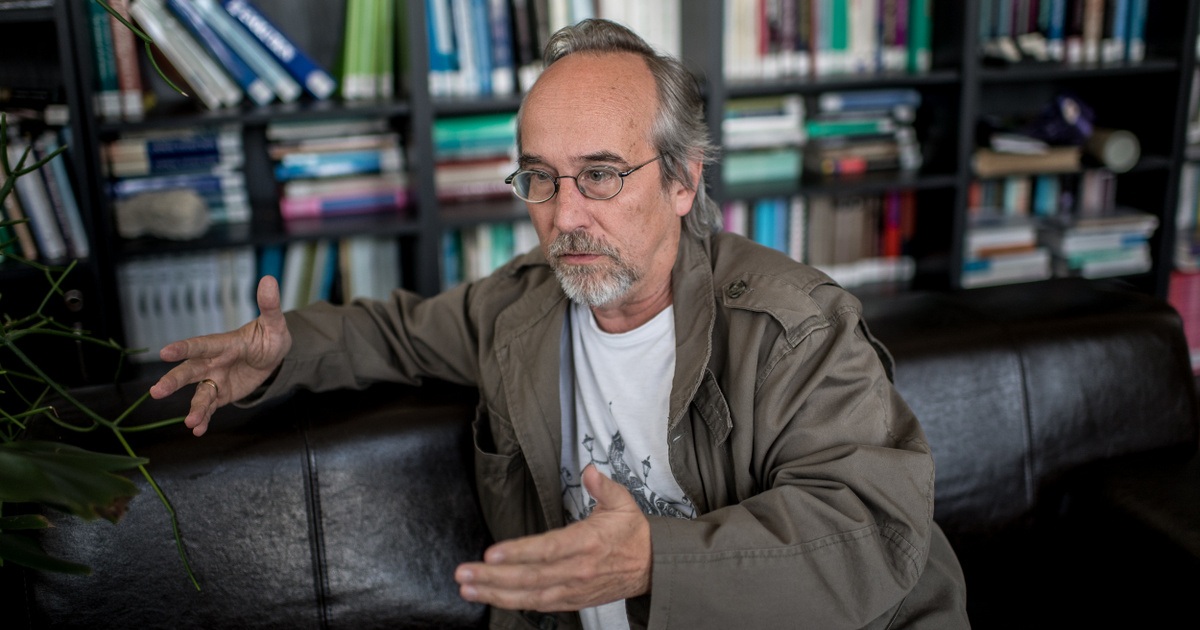Evolutionary biologist Iorz Száthmáry, a full member of the Hungarian Academy of Sciences, who wrote, among other things, in collaboration with John Maynard Smith Great steps of development We can tell about the book, that he and three fellow foreign researchers won the prestigious European Research Council tender and the associated 13 million euros. Their goal is to prove that it is possible to create life in laboratory conditions within six years, starting from chemical molecules.
Szathmáry’s other three colleagues are also senior researchers: molecular biologist Andrew Griffiths, who developed the molecular splitting technique, which allows him to create very small, stable droplets that can be split in two at the right moment; and two chemists, Sigbren Otto and Gonen Ashkenasi, who are working on building virtual and real reaction systems.
Little life
Their project, MiniLife, will be successful if the microscopic balls swim, grow, and divide in a tank filled with nutrient solution. This will be a unique system that has not yet existed, in which they will be able to study the process of evolution, and it can adapt to perform useful tasks, while it will be easy to follow the chemical solutions that it has “selected.”
Szathmärri says the idea for the project is based on Tibor Gäntti's idea, because although people have long been interested in what life is, and how it differs from inanimate objects, Tibor Gäntti came up with the best approach to this question.
Already in the 1970s, Ganti published his theory called “Kimoton”, in which he explains that For all simple living systems You need three ingredients. That's it.
- metabolic component,
- The part that guarantees the inheritance,
- And the containment system.
The latter prevents the ingredients from dispersing.
Eörsék Szathmáry's big idea was that, as a first step, they would try to create a system that would meet the standards of life set by Tibor Gäntti. As Szathmáry says:
Subsystems must work as a unified whole. These are all Autocatalytic systems, i.e. they stimulate their own formation. Such systems are always found at the bottom of biological reproduction.
The purpose of creating MiniLife is similar to bacteria: it absorbs materials, inherits and divides. If this happens, then it can be proven that the living system has a chemical basis.
Although Szathmáry is the theoretical researcher and mastermind, the work is far from theoretical. The goal is precisely to create simple living organisms in flasks through chemical bonds. It’s not theoretical chemistry, but “concrete,” they hope, spheres 100 nanometers in size.
But why do you need so many euros and six years?
As Ewers Szathmärke says:
You have to find it.Ingredients, and it worksTo ensure that none of the subsystems are spread. The important thing is that the real chemical reactions and Organizations comes into existence and is thus born The first artificial living system.
They have started the research now because “the general development of science and some areas of chemistry have just reached the point where we can implement it technically, and we currently have enough knowledge about autocatalytic systems, which is enough.”
Chemical analysis methods, i.e. chemical diagnostics, are needed and have developed greatly in recent times. Machine learning of artificial intelligence is also used when computer simulations are used to examine how subsystems of different quality work together.
Szathmari adds:
It is important thatYou should have many practical examples of this type of subsystem.NIn k, the autocatalytic system is not known.We still have a lot, but we are striving for more.I work as a chemist. Generative chemistry attempts to predict the reactions of different molecules based on their properties in a computer model, resulting in a large chemical network containing many components and reactions.
They are confident that the theory can predict something promising about autocatalytic systems, and that it can then be tested experimentally. But he stresses that this is not a search for the origin of life, but rather the production of artificial living systems, the components of which are not necessarily realistic in terms of the historical origin of life. In MiniLife, they usually do not deal with materials from today’s terrestrial life, because the goal is easier to achieve with these complex families.
Could the research be related to the possible existence of extraterrestrial life? Szathmärke's answer is that in Gäntti's concept, there are abstract principles of organization in terms of function, the operation of which I would like to illustrate now. “The abstraction means that if there is life elsewhere, perhaps not on Earth, and it does not depend on our chemistry, it can still be organized in this way.”
That is, on the principle of metabolic processes, the limiting system, and the genetic system. The evolutionary biologist adds that the large moons, Europa, Titan, and Enceladus, have a lot of organic matter and water, and it would be huge if we could find life on these moons, which could have emerged through independent evolution. “I wonder what chemical solutions or genetic code they might contain? We still have to study the atmospheres of distant planets, which we are getting closer and closer to. If the atmosphere of a planet several light years away is strange and suspicious, there may be life there.”
(Cover photo: Eörs Szathmáry on July 2, 2018. Photo: János Bődey / Index)














































